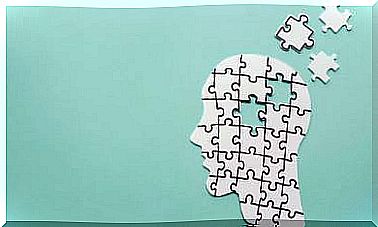3 Experiments On The Power Of The Smile

Smiling is one of those faculties that are exclusively human, although sometimes we insist on seeing smiles in cats, dogs or elephants. It is an expression that causes great impact. Proof of this is that several experiments have been carried out on the power of the smile and almost all of them conclude this.
Regardless of science having conducted experiments on the power of the smile, anyone can do tests in their daily life to draw their own conclusions. For example, try simply asking someone for a favor by displaying a serious expression, and then doing the same, but smiling. See if there is any change.
We all place more trust in those who smile. There are unconscious mechanisms that allow us to detect whether someone is smiling sincerely or not. If the gesture is not genuine, the opposite effect is generated: we distrust. Part of this is what the experiments on the power of the smile prove. Let’s look at three of them.

1. “Social glue”, one of the experiments on the power of the smile
One of the most interesting experiments on the power of the smile was carried out by scientist Ron Gutman, who has studied the subject for several years. The conclusions of their investigations were published in Forbes Magazine, in an article called The Untapped Power Of Smiling.
This study gives us a striking fact. A young monkey was placed next to two people. One of them was smiling and the other was not. The little animal approached the smiling one. The test was repeated several times and the same thing always happened. Something similar happens between humans.
The article reviews a study carried out at the University of Upssala, Sweden, on the reactions generated by different facial expressions. It was concluded that people who smile tend to infect their good will. It was then postulated that ” the smile is evolutionarily contagious .” Therefore, the smile helps to bring people together, acts as a “social glue”.
2. The smile generates greater remembrance
Another of the experiments on the power of the smile was carried out at Duke University (United States). 50 volunteers were asked to interact with a woman from an imaginary travel agency. Some were cared for by a woman who remained serious; others, for one that seemed sad; the others, for one who was smiling.
In the end, everyone who interacted with the smiling woman reported being more attracted to the business in question and stated that they were more motivated to do business with her again. The same scientists established that when a person smiles, the orbitofrontal cortex is activated, an area of the brain related to gratification.
Likewise, it was found that the smiling face generated greater remembrance. By producing a rewarding experience, we tend to register it more clearly in our memory. Similarly, we tend to be more open to requests from people who smile.

3. Fake smiles don’t help much
In 1980, the German psychologist Fritz Strack, from the University of Würzburg, carried out another experiment on the power of the smile. Although he used a precarious methodology, the results of his study became very popular. They said that if a person is sad or moody and forces himself to smile, even falsely, his mood tends to improve.
However, 17 other researchers, from different parts of the world, wanted to replicate Strack’s experiment, but obtained unclear results. So the researcher Eric-Jan Wagenmakers, from the University of Amsterdam, decided to do a more in-depth study to analyze in detail the subject in question.
The research was carried out with 1,894 people and a highly rigorous method. In the end it was concluded that there is no reason to believe that forcing the face to smile improves a person’s mood. In fact, basically no subjective change was detected when smiling forcibly.
All this allows us to point out that the smile is not just a facial expression. It must be accompanied by a real feeling to be effective. What is certain is that we can look for stimuli that allow us to smile and there it is true that our mood changes remarkably.









